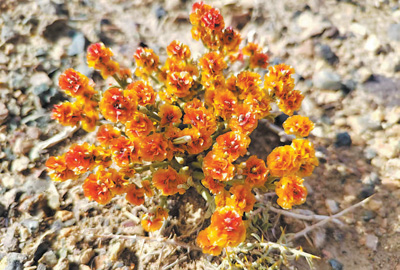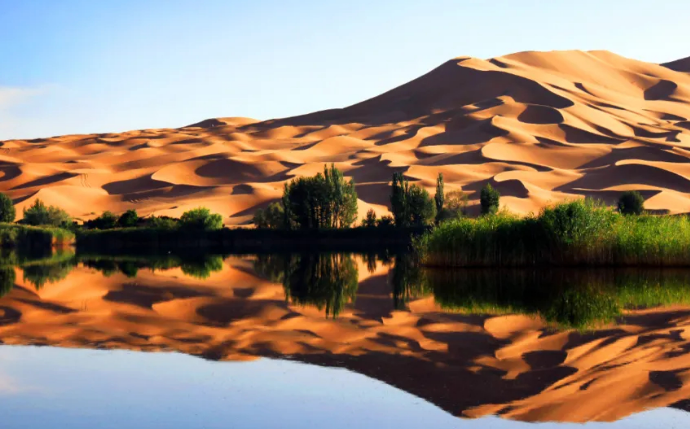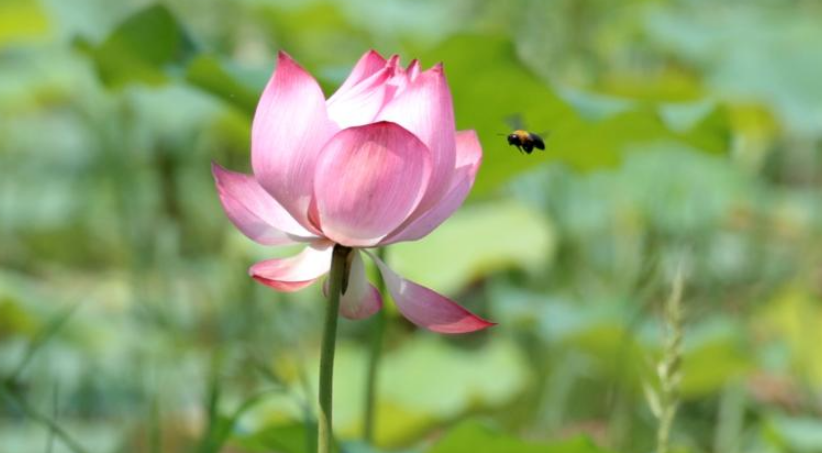Eco-friendly construction of a pipeline in nature reserve, NW China’s Gansu

Photo shows anabasis brevifolia C. A. Mey., a species of flowering plant that can survive in harsh desert conditions. (Photo courtesy of Gansu Anxi Extreme Drought Desert National Nature Reserve)
Through careful route planning and adjustment, eco-friendly construction, and ecological restoration, the No. 4 pipeline of China’s west-to-east gas transmission project has blazed an eco-friendly trail of construction in a national nature reserve in northwest China’s Gansu Province.
As a key project of China’s overall plan for oil and natural gas development during its 14th Five-Year Plan period (2021-2025), the No. 4 pipeline runs through the Anxi Extreme Drought Desert National Nature Reserve, which is located in Guazhou county, Jiuquan city, northwest China’s Gansu Province.
Established in June 1987, the nature reserve is China’s only multi-functional comprehensive reserve that mainly protects extremely arid desert ecosystems and their biodiversity. It is situated in a region where annual rainfall is just over 40 millimeters and evaporation reaches more than 3,200 millimeters.
Despite its harsh conditions, the reserve is home to 455 species of higher plants, 210 species of vertebrates, and 387 insect species. It shelters China’s national first-class protected wild plant long thread moss and national first-class protected wild animals including Przewalski's horses, snow leopards, Thorold's deer and golden eagles.
Routing
Before construction, a great deal of preparation was required. This included the routing of the pipeline to cause the least damage possible.
Upon entering the nature reserve, personnel conducted a detailed reconnaissance.
Reconnaissance was divided into two groups, with each group advancing about 3 kilometers per day. Using visual observations and drones, they conducted a detailed survey of the geological features, vegetation distribution, and other details along the pipeline corridor.
“The purpose of the reconnaissance is to accurately grasp the ecological details along the pipeline to optimize adjustments,” says Han Jiangping, who is in charge of the construction of a section of the No. 4 pipeline. After the reconnaissance, in consultation with the design unit, the pipeline was adjusted twice.
With the first adjustment, Han’s team shifted the pipeline construction area westward by over 80 meters to avoid a patch of Gymnocarpos przewalskii Maxim., a rare desert shrub that is a relict from the Tertiary period.
The second adjustment, which involved over 6 kilometers of pipes, was made to protect a vital water source for local wildlife, according to Han.
The area of concern was the nature reserve’s Daquan wetlands. To protect the nearby vegetation and reduce disturbance to the wild animals, the original installation route was moved over 40 meters away from the wetlands, Han said.
Beyond the location of the pipeline, the team also took additional steps. The density of machinery was appropriately controlled, vehicle speeds were reduced, fuel was added away from the wetland, and noise, dust, and oil pollution were minimized to reduce the potential negative impact.
Preparation
Before construction began, the project team conducted environmental impact assessments, developed detailed ecological protection measures, provided specialized environmental training to workers, and set up eco-friendly campsites to minimize disturbance to the local wildlife.
“We made it clear to everyone that ecology must come first when carrying out construction in a nature reserve,” said Wang Hui, a manager from the construction project management branch of China Oil & Gas Piping Network Corporation (PipeChina).

Workers weld pipes for the No. 4 pipeline of China's west-to-east gas transmission project at Gansu Anxi Extreme Drought Desert National Nature Reserve, which is located in Guazhou county, Jiuquan city, northwest China’s Gansu Province. (People’s Daily Online/Wang Hui)
Meanwhile, the project department has been monitoring the construction area using devices including unmanned aerial vehicles (UAVs) and surveillance cameras, correcting and stopping in time construction activities that could cause ecological damage.
The nature reserve has also designated staff members to patrol and inspect construction sites to ensure compliance with ecological boundaries, said Pan Xuejiao, deputy head of a local management station of the nature reserve.
Construction
The pipeline spanning 64.6 kilometers through the nature reserve comprises more than 5,000 pipes, with each measuring 12 meters in length and 8 tonnes in weight.
Transporting these pipes into the reserve while limiting ecological impact is no easy task.
One area of particular concern is vehicles sticking to the designated paths when transporting the pipes. Thanks to years of weathering, the desert surface has formed a crust “locking” the underlying sand in place. If vehicles fail to travel along previously traveled routes, they risk breaking the crust and releasing the underlying sand, causing sandstorms.
Even if it seems the vehicles can travel a more direct route to the construction site, they must stick to established paths, said Han.
In addition to sticking to strict transportation paths, the teams are also welding elevated pipes to 1.2-meter-high supports to allow the free passing of animals, as well as carefully managing excavated soil to prevent over-stacking and floating dust, added Han.
Beyond taking steps during construction to protect the environment, work will be done upon completion to restore the ecological environment, Wang said.
The post-construction ecological restoration plan includes covering exposed areas with gravel, compacting and watering temporary roads to prevent wind erosion, planting drought-resistant native species, and implementing artificial watering to aid vegetation recovery, Wang added.
Photos
Related Stories
Copyright © 2024 People's Daily Online. All Rights Reserved.









